The article below was written by reader Paul Manson in response to my recent story on how construction at the E Burnside/12th/Sandy intersection is impacting the bicycling experience on SE Ankeny, a nearby bike boulevard street.
Paul is an environmental and sustainability consultant and also serves as a volunteer on the Sullivan’s Gulch Trail Committee and as an alternate citizen representative for Multnomah County on the Metro Policy Advisory Committee.
Your post on the increased traffic on SE Ankeny made me want to send a quick note. There is definitely an increase in traffic, but this issue is bigger than just Ankeny — all these small individual impacts on the quality of the ride add up to much more.
For me, it is just one more irritation in what marks the beginning of a dangerous and frustrating end to my commute to work. I ride from my house at 50th and Division to the Lloyd District, about four miles, everyday. Starting at 16th and Ankeny the commute gets dicey.
With construction on the Burnside Couplet, northbound 12th Avenue is has lost its right turn lane onto Burnside for cars turning east. So, it seems more people are turning off 12th to get up to Ankeny around construction. There is also traffic coming up Ankeny from closer in, I presume from MLK or Grand. There is also more traffic cutting across Ankeny at 16th, 15th and 14th as people try to get around the Sandy-Burnside mess.
“The little disruptions at the end of my commute are individually small, but from this tolerance perspective there comes a point when its too much for some riders.”
My ride is further complicated by the bottling plant at Couch and 12th. Their semi trucks try to back into the plant at rush hour and block all traffic on 12th. This backs up everything further south towards Pine (about six blocks). After the bottling plant on 12th is Benson High, where the bike lane becomes the de-facto loading zone for passengers.
After that is the terrible series of intersections at 12th and 11th at Lloyd Blvd (just over I-84). There a right turn is allowed with a green arrow and Trimet buses and cars swing right through the bike lane making the turn, even with cyclists waiting for a green to go straight. It’s crazy!
There is the oft-cited hierarchy of cyclists in Portland that has the fearless category, the interested but concerned, and so on. I’d suggest another way to understand cyclists: it’s about tolerance.
“I work with ecologists and we often frame species in terms of what they will tolerate in their habitat. I think the same can be said of cyclists, they will tolerate a certain mix and level of stresses before they give up.”
I work with ecologists and we often frame species in terms of what they will tolerate in their habitat. I think the same can be said of cyclists, they will tolerate a certain mix and level of stresses before they give up. A cyclist already has to tolerate certain stresses no matter what; things like safety, weather, and so on. But a rider also needs to tolerate the infrastructure.
I think many of us will put up with certain deficiencies, but from the tolerance perspective there comes a point when it simply becomes too much.
I tolerate most anything – and that’s me. But I worry about other cyclists where these risks and hazards are the final straw. One little thing is all it takes to reset their whole consideration for cycling.
When we make decisions about planning for construction projects and infrastructure in general, we need to remember to ask ourselves: Are we adding that final straw of challenge and risk that will make someone decide that they just can’t tolerate biking any longer?
— Connect with Paul Manson on Twitter via @paulonabike.

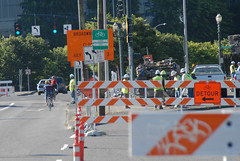
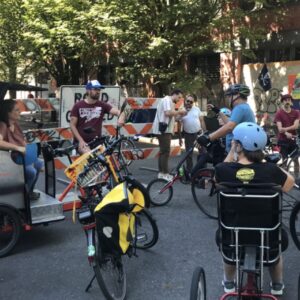
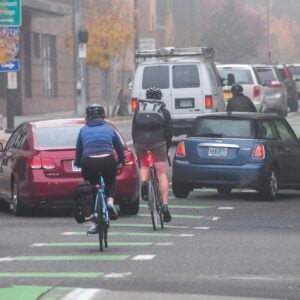
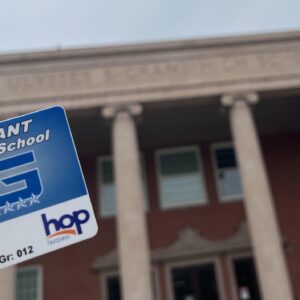
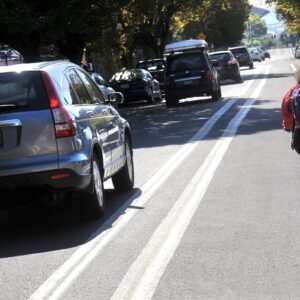
Thanks for reading.
BikePortland has served this community with independent community journalism since 2005. We rely on subscriptions from readers like you to survive. Your financial support is vital in keeping this valuable resource alive and well.
Please subscribe today to strengthen and expand our work.
This is an interesting perspective, the biological one. We are a biological species, after all. It is a truth that when we each put on our helmet (or don’t) and take to the road we choose to engage in a certain level of “risk”. Even when we get in a car to make that trip. Traffic snarls definitely make you rethink where you’re putting your commuting effort, and how you choose your route. The interesting thing I heard someone note was that for a 25 mile commute, the variability in travel time on a bike was MUCH less than travel time in a car, given traffic conditions. So, you can more easily navigate the tough bits, and it slows you down a bit, but only nominally. Being flexible definitely helps, but I get that being too flexible can lead to putting you in a dis-adavantaged position. That said, take 16th all the way North to Irving and then hook up 12th at the bridge, would be my recommendation 🙂
One reason I wanted to run Paul’s article is because it is similar to something I myself have wanted to write for a long time.
I live in North Portland and used to work in SE at 8th and Hawthorne area. Every day I was reminded how lacking portland is in safe and comfortable N/S connections from the inner central east side. Crossing MLK and Grand, riding north/south through the freight/industry corridor.. it was all sub-par at best and not something ANYONE new to cycling or considering cycling would have ever even tried to do.
Tolerance seems like a good approach, and also could potentially be merged with level of service analysis.
Some days I can barely tolerate getting on a bike, and the zone near Lloyd that Paul writes about has a lot to do with it. So does MLK, which is often intolerable to cross even as a pedestrian at a signalized crosswalk.
All the new sharrows on the other hand make me feel willing to tolerate just about anything.
I think the biological analogy is an interesting one, but it also speaks to another major factor, especially about commuting. Humans are also highly adaptable, and no commute mode is more adaptable than riding a bike. I mean really – as a cyclist I can ride either in the lane, in a bike lane, on the sidewalk (except in downtown), ride either beside cars or behind them, put it on a bus or MAX, etc… And most importantly, if traffic is too heavy or becoming unsafe, I can stop, pick up my bike, become a pedestrian, and do a U-turn or divert to more favorable avenues. That is a level of freedom not enjoyed by any other mode (even motorcycles and mopeds), all of which are much more inconvenienced by construction than bicycles, and must simply wait it out. As mentioned by the first poster, the marginal increase in travel time riding a bicycle due to traffic is much less than in a automobile …and again, why is the goal to get to work/home so quickly? Why not take slower, more relaxed routes instead, and tolerate a more leisurely commute? To rush to and from work by bike just reiterates the same type of mentality that has infiltrated car culture. The focus should be on safe routes rather than quick ones… lets get some diverters on bike boulevards while we are at it, and leave the fast streets to the automobiles.
As the sticker says “If you were riding, you’d be happy by now.” Though not always true, seems to fit me most of the time.
When I’m driving in traffic, I get frustrated (and curse myself for my decision!) by my lack of forward progress and loss of time.
I think many drivers feel this way. And as jv mentions, they have no choice. The last straw for them is when they see that happy cyclist cruising on by in the bike lane. Then all that frustration has a target. “Damn cyclists!”
they don’t just test bike commuters, they test the people in cars as well…
before I became one of the dreaded california transplants and was still working in the bay area I had to take the pass on 680 between sunol and fremont… it was the worst commute of the metro area at the time… one day I had a bad experience with a raging trucker and just turned my car around and went back home and never went back to that job…
it only takes one more little challenge to push you past your tolerance level and give up…
there’s nothing that will force me completely off a bike and into the pedestrian world full time… I think I’ve found the best mix of transport with bike/bus/train combos…
so yes it’s sad that all this stress is being placed on people that bike but usually it’s during commute time when it’s seasoned serious riders out there…
hopefully the stress doesn’t discourage too many casual/new bikers…
jv #4
To rush to and from work by bike just reiterates the same type of mentality that has infiltrated car culture. The focus should be on safe routes rather than quick ones
My commute to work is 45-50 minutes each way. If I take the safe route, away from traffic, it bumps up to a minimum of 75 minutes. If I attempt to avoid any large group of autos, like a cowering mouse, it can easily take over 2 hours.
Who are you to dictate that I get to and from work and home in a reasonable time?
And, NO, there is not any reasonable housing near where I work but my current residence puts my wife within 1 mile of her job and much closer to school.
I have a desire to be able to spend some of my time not in transit and to do this I have to take main roads, roads with a lot of traffic that have signal priority. Oddly enough these roads have also tended to be much freer of debris due to more vehicle traffic sweeping the road clear.
But I’ll tolerate your choice in commute should we encounter each other, leave me to mine.
I really like the biological analogy.
Two things- traffic is a pretty mutable and adaptable ecosystem- traffic will find the path of “least resistance” and it’s important for construction planners to thing about the downstream effects of shifted traffic patterns.
It’s interesting to me how riders adapt and increase their tolerance with experience. No one should have to put up with all the things that the essayist describes, but even a simple on-street commute seems just as daunting to an inexperienced rider.
The more we bike, the more “friction” we are willing to handle. At a certain point however, its too much resistance and even die-hards won’t ride.
“Are we adding that final straw of challenge and risk that will make someone decide that they just can’t tolerate biking any longer?”
For too many *former* bike commuters — and I’ve talked to dozens — this is a rhetorical question. They already made the choice.
Past a certain point you cannot make car-centric infrastructure work as well — or as safely — for people who ride bikes.
Past a certain point — of age, physical fitness, distance traveled and a host of other factors — an individual will decide it’s too much to take.
At the point when an individual has his/her Last Straw — An ugly confrontation, a near-miss, or a full-on hit — that is a person deciding they’ve grown tired of waiting (or agitating) for things to change and for the infrastructure to become more bike-ped friendly, and they sell the bike and get back in the car and start driving to work again. Nice idea, good for my health and all, but I think I’d rather get there sooner and in one piece…
What I think really happens is that the bike rider who gets back into the car has really grown tired of tilting at windmills. And although I’m not ready to start driving again myself, I can’t really blame them for making that choice.
Any real change in infrastructure — and in values in general — that moves us away from a car-dependent future will happen long after you and I are gone. That is a difficult truth to carry around day after day, especially when you’re the one on the bike and feeling so vulnerable.
Are you sure about northbound 12th losing the right turn lane at Burnside? I go through there regularly (and recently moved via that route and was driving it many times a day for several days at a time) and I have not seen them remove the right turn onto Burnside east.
In fact, the change they made put in a great big bike lane, kept the right turn lane, and reduced the northbound straight through traffic to one lane.
Unless it is a change that has happened in the last couple days… I have not been down that way since roughly July 4.
However, the crap at the north end of the I84 overpass is accurate. The lights arte poorly timed, traffic comes from everywhere and nowhere, the bike routes are poorly marked and risky for right hooks, and the MAX and 84 offramp make traffic hard to figure out.
Otherwise, this article is completely true – that is why we have the expression “the straw that broke the camel’s back”.
However, some times there is nothing you can do to mitigate construction hassles. You just have to hurry, build it and be done. One thing I have noticed here though is we rarely do 24×7 work on road construction projects. Many places I have lived would perform 24×7 road construction so that the number of days with disruption would be minimized. (Although one place I lived would set a “finish date” and would leave the orange barrels up until that date even if the project was completed months ahead of time…..)
You make a great point… There are places I don’t ride to for exactly this reason (including my work; fortunately I have a good carpool)
Thinking about your specific situation though I wonder if you have considered starting off by going North: connecting to 53rd or 47th across I84 and then Hancock or Tillamook down to the Lloyd area? I think you might be able to find a variation of this route that’s both fairly quick and less dangerous… good luck.
East Burnside is so much easier to cross on a bike now that it is one way. Only two lanes to cross instead of four.
good points, Paul — put up enough barriers and a cyclist will eventually decide it’s too much to take, as Beth (#9) says. I think we can all agree that’s an undesirable outcome.
However, some route planning flexibility can serve a cyclist well; it’s more difficult for a cyclist than a motorist because, well, the only real punishment for a motorist choosing a bad route is delay. Not so for a cyclist – all sorts of fear and loathing lay in wait on a poorly selected route.
So knowledge of the street system can go a long way – as can a good bike map. In Paul’s case, (on Division & 50th) why not use the 53rd ave. (or 47th, or 41st at the MAX station) bridge over I-84, cut west thru Hollywood on Hancock/ Tillamook, over to the north side of the Lloyd district?
Yes, it may add a half mile or so in distance, and there is possibly a small climb over the shoulder of Mt. Tabor, but hey, it’s not a perfect world. Sometimes you just gotta do some extra planning and find a workaround.
Hey Paul,
If I might offer an alternative.
Oops, the link didn’t go through. Let me try again.
http://maps.google.com/maps/ms?ie=UTF8&hl=en&msa=0&msid=109446540498924339121.00048aeb069556dca8605&ll=45.519699,-122.639179&spn=0.030911,0.076218&z=14
Apparently I suck at google maps. Nevermind.
Long story short. Try taking Clinton to 34th, take that north then zig on Stark to 28th, take that north to Wasco where you take a left just after crossing 84, then you’re coming in the back way to Lloyd Center.
Give it a shot.
I just moved from 22nd and Ankeny to Reed and the central eastside has just become my daily nightmare. I’m faced with the esplanade or going across the 84 at 53rd. the routes in-between are congested with car and bike traffic and are a headache to ride through (ie clinton/ Ladds/ Hawthorne. I’m not looking to ride in stop and go traffic and its a must on the east side.
as for the couplet, it has done nothing but push car traffic onto local surface low speed streets. traffic calming/ barriers are a must to prevent/ discourage cut through traffic.
I ride from SE Portland to Lloyd District and I like my commute up to the 12th and Lloyd CF area. It is a mess for cyclists and really for car traffic for that matter.
I would be happy to share my route that avoids 16th and 12th (until 12th and Irving) if you are interested.
Heck, let me know the time you pass through SE and I would meet you for coffee and ride my route with you to show you…
Cheers to another Lloyd District rider!
Sheilagh
Hey Jonathan, regarding your comment (#2), maybe it’s time for that 7th Ave bike/ped bridge article? 🙂
Solutions have been proposed for making close-in N/S connections easier and safer; they just haven’t been followed up on.
I still maintain that a bike/ped bridge over 84 at 7th would be a wise investment in infrastructure. For all of us, but particularly in terms of creating a better connection in that area for the nervous-but-interested and people with kids.
Amen. Also, I was walking along sandy last saturday night and was surprised at all the people riding bikes along that road as well. If we had the courage to take that on street parking away on Sandy and build the 7th crossing we’d really be getting somewhere making Portland a true bike friendly city. Ditto the terrible crossing at 11th and Sandy.
I agree. Close in N/S biking is difficult at best. Perhaps making 21st and 28th one way and creating bike paths on them?
On a side note, it’s particularly bad this summer. Dang Democrats and all the stimulus money! I live in Irvington and bike downtown everyday. On my little 8 mile round trip ride one day I counted 8 *different* construction areas I had to ride through. That’s counting the whole Rose Quarter mess as one and that wasn’t counting the movie/commercial being shot by Union station which closed some streets.
Commute issues? Really… Let me share mine with you.
When I am lucky enough to work from home I get to leave my house at 6AM, get on 205N with all the other lemmings and hope to get past the 84 interchange without getting creamed by someone” talking on their cell, putting on makeup, texting, stirring their coffee while changing lanes without signaling. Then its across the Glen Jackson to East Vantuckey, where I try and balance between getting rammed by someone doing 75, getting pulled over for doing 75 by the WSP, or doing 50MPH behind Grandma. Then There is the 205 interchange with I5, 20 some miles of freeway (same as 205 but the left lane is doing 85, the middle 60) off at Longview, down Industrial Way and mix it up with truck traffic for 3 miles and over the Longview Bridge to Ranier. Time- one hour. Then I work ten hours, usually on my feet.
On the way home I have found that its better to take Hwy 30 to I-5 south. 205 can be a parking lot that time of day, but this isn’t a picnic either, but it is only really bad from when you get on I5 south and have to get over two lanes or get forced off in the Lloyd center (remember AVOID THE LLOYD?). No one wants you to get over, nor do they want you to pass them on the right. Oregonians Merging is not pretty. Then get passed the 84 exit, over then up Belmont for 60 blocks. Time home- 1 hour ten minutes.
Yes it is in a car (often a motorcycle), but their is stress enough, and none of the benefits. I would kill for your commute.
In its current torn up configuration, the Burnside-Couch-Sandy-12th area is bad for cars as well. As of a few days ago, try heading east on Burnside without having to do a fast lane change to avoid being forced onto Sandy.
A few months back, I was walking in the area and found they blocked crosswalks on both sides of 3 streets in a row over a weekend when there was an actual hazzard only in about half the spots blocked.
This is another example of a poorly supervised construction project. The contractor does pretty much whatever they want regardless of how they endanger the public.
If you call the city, it takes many calls to get to the right person, and if you call after 3-4pm on a Friday, nothing will happen until sometime Monday, when you will be called by someone else who was passed your phone number but none of the details. You then have to waste more time repeating yourself, at which point they claim they will send someone out the next day. Usually very little happens and you have to go through a couple of more rounds of this or go to the higher ups. Often you have to go back and take photos and ask for a copy of the permit to prove that the traffic control plan was flawed from the begining or just ignored.
In summary, many bike and pedestrian problems, such as the Burnside project are caused by the city approving poor traffic control plans and by the city failing to enforce violation in a timely manner. In a great many cases, small changes would greatly improve the safety of the area.
People have been suggesting many great bike commute alternatives. Which is neat!
But it does little to address the underlying issue that Ankeny doesn’t feel safe for many bicyclists anymore.
She (18): What’s wrong with 16th (other than the Burnside crossing, which isn’t as bad as it was when they first opened the couplet)? I ride Clinton to 34th, Salmon, 16th, jog by the school to Irving, and then the fearsome 12th Ave. overpass to Lloyd. I’m a coward, and I don’t think it’s bad until I hit Irving. Then it’s nasty until I pull into the state office bldg’s garage.
i rode the bus downtown y’day morning for the first time in ages. sitting on Madison with 2 packed lanes of cars & the bikes squeezing in between, as i so often do, for the first time i got a sense of how dangerous these rides are. i know first-hand how a tiny mistake from a motorized vehicle can lead to tragedy. (yay helmet.) the more we integrate bicycles into automotive traffic, the less we encourage riding. we can’t build separate infrastructure completely, but we can’t pretend bikes are just another vehicle. there’s a long list of issues involved in all this, but right now, we’re doing most of it wrong.
and we’re among the best in the country. wow.
Even though this is an old article, a couple of thoughts:
1) Auto convenience and throughput seems to be a genuine concern of transpo engineers, while any kind of accommodation for cyclists comes off as a legally forced afterthought. Cycling is utterly disregarded until other road projects are complete, then we look around and go “oh, yeah. How can we squeeze some kind of bike lane into this mess?”
2) At times it almost appears that certain groups are actively trying to, or at least cheering for, making cycling for transport intolerable. That way, those pesky cyclists won’t come around anymore, getting in our way and junk.